
The Quran on Human Embryonic Development
In the Holy Quran, God speaks about the stages of man’s embryonic development in such minute detail, much of which was unknown to scientists until only recently. It mentions the first stages of life after conception, the second stage of life after conception, and witnesses of scientists about these scientific facts of the Quran.
“We created man from an extract of clay. Then We made him as a drop in a place of settlement, firmly fixed. Then We made the drop into an alaqah (leech, suspended thing, and blood clot), then We made the alaqah into a mudghah (chewed substance)…” (Quran 23:12-14)
Alaqah Stage
Literally, the Arabic word alaqah has three meanings: (1) leech, (2) suspended thing, and (3) blood clot.
Leech
We find similarity between the leech[1] and the embryo as we can see in figure 1. At this stage the embryo obtains nourishment from the blood of the mother, similar to the leech, which feeds on the blood of others.[2]

Suspended Thing
In figures 2 and 3, we can see the suspension of the embryo in the womb of the mother.
Blood Clot
The external appearance of the embryo and its sacs is similar to that of a blood clot. This is due to the presence of relatively large amounts of blood present in the embryo during this stage[3] (see figure 4) that does not circulate until the end of the third week.[4] Thus, the embryo at this stage is like a clot of blood.
Mudghah Stage
The Arabic word mudghah means “chewed substance.” If one were to take a piece of gum and chew it in his or her mouth and then compare it with an embryo at the mudghah stage, we would conclude that the embryo at the mudghah stage acquires the appearance of a chewed substance. This is because of the somites at the back of the embryo that “somewhat resemble teethmarks in a chewed substance.”[5] (see figures 5 and 6).
The Staging of Human Embryos
Aristotle, the founder of the science of embryology, realized that chick embryos developed in stages from his studies of hen’s eggs in the fourth century B.C., but little was known about the staging and classification of human embryos until the twentieth century.
Hamm and Leeuwenhoek were the first scientists to observe human sperm cells (spermatozoa) using an improved microscope in 1677 (more than 1000 years after Muhammad). They mistakenly thought that the sperm cell contained a miniature preformed human being that grew when it was deposited in the female genital tract.[6]
Professor Emeritus Keith L. Moore[7] is one of the world’s most prominent scientists in the fields of anatomy and embryology and is the author of the book entitled The Developing Human, which has been translated into eight languages. In 1981, during the Seventh Medical Conference in Dammam, Saudi Arabia, Professor Moore said: “It has been a great pleasure for me to help clarify statements in the Quran about human development. It is clear to me that these statements must have come to Muhammad from God, because almost all of this knowledge was not discovered until many centuries later. This proves to me that Muhammad must have been a messenger of God.”[8] (To view the RealPlayer video of this comment click here).
Consequently, Professor Moore was asked the following question: “Does this mean that you believe that the Quran is the word of God?” He replied: “I find no difficulty in accepting this.”[9]
How could Muhammad, may the mercy and blessings of God be upon him, have possibly known all this 1400 years ago, when scientists have only recently discovered this using advanced equipment and powerful microscopes which did not exist at that time?
During one conference, Professor Moore also stated: “….Because the staging of human embryos is complex, owing to the continuous process of change during development, it is proposed that a new system of classification could be developed using the terms mentioned in the Quran and Sunnah (what Muhammad, may the mercy and blessings of God be upon him, said, did, or approved of). The proposed system is simple, comprehensive, and conforms with present embryological knowledge. The intensive studies of the Quran and hadeeth (reliably transmitted reports by the Prophet Muhammad’s companions of what he said, did, or approved of) in the last four years have revealed a system for classifying human embryos that is amazing since it was recorded in the seventh century A.D.
These descriptions were revealed to Muhammad from God. He could not have known such details because he was an illiterate man with absolutely no scientific training.”[10] (View the RealPlayer video of this comment).
References:
Figure 1: The Developing Human, Moore and Persaud, 5th ed., p. 73.
Figure 2: The Developing Human, Moore and Persaud, 5th ed., p. 66.
Figure 3: The Developing Human, Moore 3rd ed., p. 66.
Figure 4: The Developing Human, Moore, 5th ed., p. 65.
Figure 5: The Developing Human, Moore and Persaud, 5th ed., p. 82
Figure 6: The Developing Human, Moore and Persaud, 5th ed., p. 79.
[1] The Developing Human, Moore and Persaud, 5th ed., p. 8.
[2] Human Development as Described in the Quran and Sunnah, Moore and others, p. 36.
[3] Human Development as Described in the Quran and Sunnah, Moore and others, pp. 37-38.
The Quran on Human Embryonic Development 5 of 6 www.IslamReligion.com
[4] The Developing Human, Moore and Persaud, 5th ed., p. 65.
[5] The Developing Human, Moore and Persaud, 5th ed., p. 8.
[6] The Developing Human, Moore and Persaud, 5th ed., p. 9.
[7] Note: The occupations of all the scientists mentioned in this web site were last updated in 1997.
[8] The reference for this saying is This is the Truth (videotape). For a copy of this videotape, please visit www.islam-guide.com/truth.htm
[9] This is the Truth (videotape).
[10] This is the Truth (videotape). For a copy, see footnote no. 9.
The web address of this article: http://www.islamreligion.com/articles/216
Copyright © 2006-2011 IslamReligion.com. All rights reserved.
Related Books
-

The Pillars of Faith
Faith means to believe in Allāh, His angels, His books, His messengers, the Last Day, and the divine Decree, both the good and bad thereof. ...
Edition: 1
-

Islam is
We present Islam as it is, without sugarcoating and we allow it to stand on its own merits. There is only one Islam and only one example of how it ...
Edition: 1
-

Fiqh Essentials
We hope that instead of being overwhelmed by his new and blessed way of life, the Muslim beginner will find this an easy guide that can best be sup...
Edition: 1
-

The Path to Prayer
It is to be noted as well that in Islam the establishment of regular prayer(iqamatus-salah) is emphasized. the Quran dose not tell us, “Pray&...
Edition: 1
-
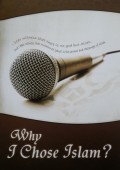
Why I Choose Islam?
O seeker of truth, if you really seek the truth put aside all preconceived notions, and open your heart. Do not let others judge or make a decision...
Edition: 1
-
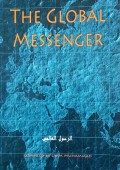
The Global Messenger
This book introduces Muhammad (Peace and blessings be upon him), the Prophet of Islam, with a glimpse of his life, character, accomplishments and t...
Edition: 1
-

STATUS OF WOMEN IN ISLAM
The status of women in society is neither a new issue nor is it a fully settled one. The position of Islam on this issue has been among the ...
Edition: 1
-

THE QURAN (English Translation)
The Qur’an is the literal word of God, The Almighty (Allah in Arabic), revealed to Prophet Muhammad (peace be upon him) through the Angel Gabriel...
Edition: 1
-
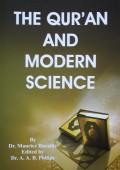
THE QUR’AN AND MODERN SCIENCE
This booklet by Maurice Bucaille has been in circulation for the past nineteen years and has been a very effective tool in presenting Islam to non-...
Edition: 1
-

Muslim Christian Dialogue
This booklet contains dialogues that the author had made with members of the Christian clergy and laity. The discussions were polite, pleasant, fri...
Edition: 1
-
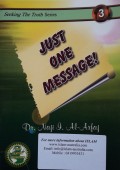
JUST ONE MESSAGE!
Just One Message is a book to those who seek the truth sincerely, honestly, and open-mindedly. After the creation of Adam, just one original messag...
Edition: 1
-

Clear Your Doubts About Islam
Information is a source of assurance and a bridge to tolerance and understanding. This book provides concise yet comprehensive answers to questions...
Edition: 1
-
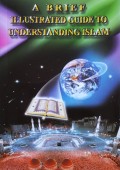
A BRIEF ILLUSTRATED GUIDE TO UNDERSTANDING ISLAM
This Islamic guide is for non-Muslims who would like to understand Islam, Muslims (Moslems), and the Holy Quran (Koran). It is rich in information,...
Edition: 1
-
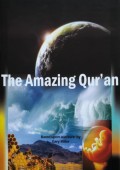
The Amazing Qur’an
What’s amazing about the Quran? One would expect that Muslims consider it so, but surprisingly, others even some opponents of Islam, have a...
Edition: 1
Related Articles
-
Teachings of Prophet Muhammad (PBUH)
QUARANTINE is a Prophetic ﷺ advice.* “Run away from the leper (the one with contagious ailment) as you would run away from a lion.” (Bukhari Volume 7, Book 71, Number 608) SOCIAL DI...
-
My Hijab is My Freedom!
Hijab, or head piece…or head cover. Or scarf, or headscarf- they all pretty much refer to the same thing: the head covering of a Muslim woman. The word is originally Arabic, and is literally defined as “Cover” or “veil”.
-
Who deserves to be Worshipped Alone?
Many people “discontent with God” because of the practices of the Church in medieval Europe and because of the claims of “god dwelling in a son”, and that “everyone is born with an original sin”. They “escaped” into worshipping a n...
-
The True God is Allah.
The True God is Allah, And Man is in Need of Him. There are those who do not believe in Allaah as the Only True God and there are those who believe that there is a Creator. Those who believe that there is a Creator believes that th...
-
THE CREATION IS IN NEED OF ALLAH
Man always looks for what benefits him and what protects him from harm. To accomplish this, man must be able to realise what is harmful. He must then know whom he should need, trust, and love so that he can attain what is beneficial as well as to ...
-
PURPOSE OF LIFE
What Does Islam Say About Our Life’s Purpose? Have you ever asked yourself following questions?
-
You’re Not Catholic? Why?
Questions from a “Catholic”? I am Jonabeth from Philippines, I am a roman catholic. I have some questions and I hope u can help me to open my mind: Is it true that Jesus was crucified? Is it true...
-
The Quran on Human Embryonic Development
In the Holy Quran, God speaks about the stages of man’s embryonic development in such minute detail, much of which was unknown to scientists until only recently. It mentions the first stages of life after conception, the second stage of life...
-
Let There Be No Compulsion in Religion
One of the fundamental truths established by the sacred texts is that no one can be compelled to accept Islam. It is the duty of Muslims to establish the proof of Islam to the people so that truth can be made clear from falsehood. After that, w...
-
How Do We Know God is One?
A Philosophical & Theological Perspective – The oneness of God, in Arabic tawhid, is a central theme in the Qur’an and a message of all of the Prophets, the Qur’an eloquently ...
-
Denying God, Denying Reality
Self-Evident Truths Does God exist? If God exists, what evidence is there to support this belief? I believe we have many good arguments which support a belief in God. We don’t require any evidence for His existence....
-
Scientific Miracles in Brief
Why Islam is the true religion of God. Most religions are based on books claimed by their followers to be divinely inspired, without any proof. Islam is based upon reason and proof. There are clear signs that the book of Islam, the Quran,...
-
The Challenge of the Quran
The Quranic challenge to produce a work similar to it, and the inability of its contemporaries to meet it. The Quran is not only unique in the way in which it presents its subject matter, but it is also unique in t...
-
Islam & Christianity
The Bible Christianity, which claims to have nearly 1.2 billion adherents all over the world, is a Semitic religion. It owes its name to Jesus Christ (peace be on him) and the Holy Bible is the sacred scripture of the Ch...
-
Islam & Buddhism
Historical criticism has proved that the original teachings of Buddha can never be known. It seems that Gautama Buddha’s teachings were memorized by his disciples. After Buddha’s death a council was held at Rajagaha so that the ...
-
Islam & Atheism
God Existence – Atheists might assert that they don’t acknowledge the existence of God. Undeniably there are times — whether during the agonising days of a lingering illness, the seemingly eternal moments of a v...

















































